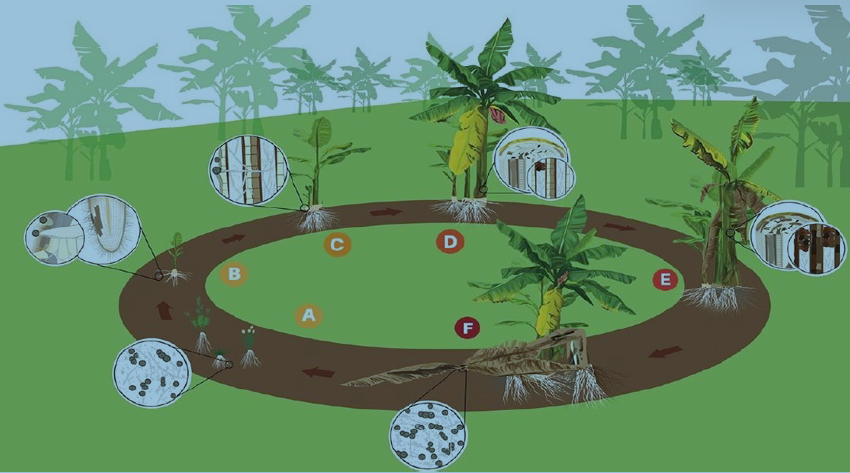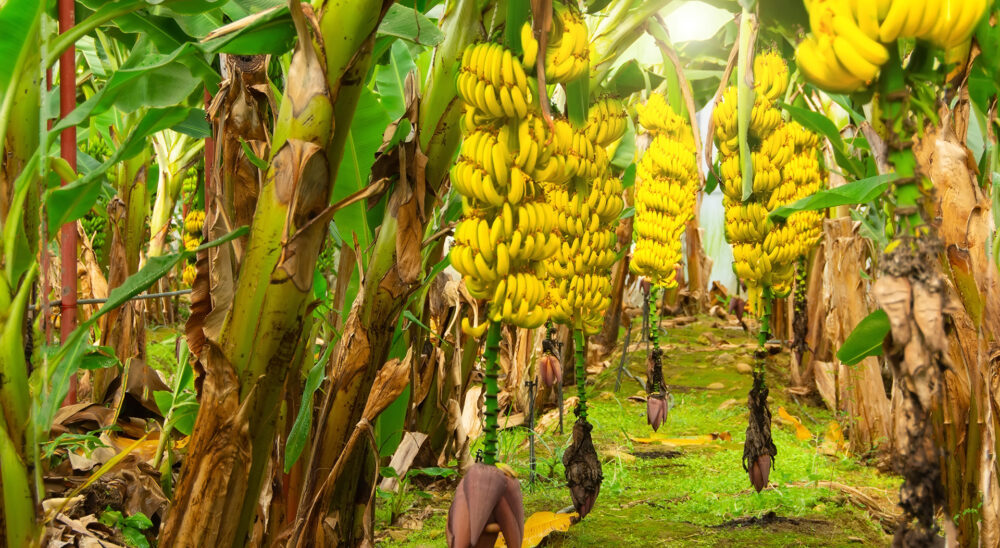Fusarium wilt, caused by the fungus Fusarium oxysporum f. sp. cubense (Foc), is a devastating disease that threatens banana production worldwide. This soilborne pathogen is prevalent in nearly all banana-growing regions, particularly affecting the highly traded Cavendish variety. Fusarium wilt disrupts the plant’s vascular system, leading to wilting, yellowing of leaves, and, ultimately, plant death. The disease poses significant economic challenges to the global banana industry due to decreased yields and crop quality, making it a top concern for banana growers and agricultural stakeholders.
This research, conducted by Uzoma Nobel Akwuruoha for his dissertation, aims to address these challenges by developing a more effective detection method for Fusarium wilt. Under the guidance of Professor Willie Perold from the Department of Electrical and Electronic Engineering and Dr. Diane Mostert from the Department of Plant Pathology, the research focuses on creating a low-cost, portable biosensor capable of rapidly detecting the Foc pathogen. This innovative approach promises to improve disease management and support banana farmers in combating this persistent threat.
Challenges in Managing Fusarium Wilt
Traditional management methods to control Foc, such as quarantine procedures, farm hygiene, and cultivation of resistant cultivars, are often inadequate or too costly. These approaches, while partially effective, cannot entirely prevent the disease, especially given Foc’s persistence in soil for long periods.
Early detection is a critical component of disease management, but current methods rely heavily on visual symptoms, which are unreliable and time-consuming. DNA-based assays such as PCR, though more accurate, are costly, require specialised equipment, and are inaccessible to many farmers in resource-limited regions.
The complexity and cost of current detection methods make it necessary to develop a more efficient, cost-effective, and portable solution for detecting Fusarium wilt. This research seeks to develop a DNA-based electrochemical magnetic nanoparticle biosensor for the rapid and precise detection of Foc. The aim is, therefore, to create a low-cost point-of-care (POC) device that enables early-stage disease detection, providing farmers and agricultural professionals with the tools to make informed disease management decisions.

Fig 1: Life cycle of Fusarium oxysporum f. sp. cubense within the banana host.
Proposed Biosensor Technology
The project investigates a biosensor that uses DNA probes bound to magnetic nanoparticles to detect the presence of Foc. The technology is based on electrochemical biosensing, where linear biotinylated DNA probes are attached to streptavidin-coated magnetic beads, which are then immobilised on a screen-printed electrode. The use of a squarewave voltammetric technique allows for the detection of changes in current peaks during the reduction and oxidation of DNA samples on the sensor, which indicate the presence of Foc.
This biosensor offers several advantages:
- Cost-effectiveness: The materials and processes involved in developing the biosensor are designed to minimise costs, making it accessible to farmers and plant protection organisations.
- Portability: The sensor’s small size and ease of use make it ideal for field applications.
- Rapid Detection: The electrochemical technique ensures quick results, making the biosensor a practical tool for early disease intervention.
- High Sensitivity and Specificity: The sensor’s design allows it to detect even low concentrations of Foc DNA, enabling early-stage disease management.
Biosensor Development Process
The main objectives of this research are to:
- Identify and develop a strong conjugation method for DNA probes on surface-activated magnetic nanoparticles.
- Design and fabricate a screen-printed electrode to act as the magnetic transducer.
- Optimise the immobilisation of DNA-conjugated magnetic nanoparticles onto the electrode surface.
- Test the biosensor’s sensitivity and specificity in detecting Foc Tropical Race 4 (TR4) DNA.
The research focuses on designing and testing a magnetic nanoparticle-modified screen-printed electrode biosensor. The electrode serves as the transducer, with the magnetic nanoparticles acting as the linking mechanism for DNA probes. The squarewave voltammetric technique measures the electrochemical responses when DNA is introduced to the sensor. This approach ensures that any changes in current peaks, triggered by the reduction or oxidation reactions, indicate the presence of the Foc pathogen.
The biosensor aims to provide a practical, sensitive, and rapid method for detecting Foc, thereby helping farmers manage Fusarium wilt more effectively. The development of such a device would enable more targeted disease control strategies, reduce the spread of Fusarium wilt, and support the banana industry’s long-term sustainability.
Future Direction
This research is expected to contribute significantly to plant pathogen detection, especially for Fusarium wilt in bananas. By providing a portable, cost-effective, and sensitive detection method, the biosensor could revolutionise how diseases like Fusarium wilt are managed globally. Future research could explore the biosensor’s adaptability to other plant pathogens, further enhancing its utility in agriculture.
Download and read the full research paper: https://scholar.sun.ac.za/items/98973b55-0cf1-4751-b14f-083f2a91798b





